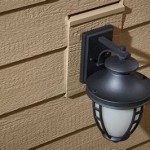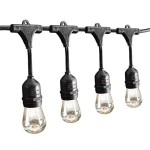Best Paint For Outdoor Timber Fence: A Comprehensive Guide
Selecting the optimal paint for an outdoor timber fence necessitates careful consideration of various factors, including the type of wood, local climate, desired aesthetic, and longevity expectations. The purpose of this article is to provide a comprehensive guide to navigating the numerous paint options available and making an informed decision that will result in a durable, aesthetically pleasing, and protective finish for the fence.
Timber fences are exposed to a wide range of environmental stressors, including sunlight, rain, temperature fluctuations, and potential fungal or insect infestations. These factors can lead to deterioration, fading, cracking, and rotting of the wood if it is not properly protected. Therefore, the choice of paint is critical for prolonging the lifespan of the fence and minimizing maintenance requirements.
The market offers a vast array of paints, each with its unique properties and suitability for different applications. Distinguishing between these options and understanding their advantages and disadvantages is crucial for achieving the desired outcome. The following sections will delve into the key considerations and paint types relevant to outdoor timber fences.
Understanding Key Considerations for Paint Selection
Before exploring specific paint types, it is essential to understand the key considerations that should influence the selection process. These factors will help narrow down the options and ensure that the chosen paint is well-suited for the specific needs of the fence.
Wood Type: The type of wood used for the fence significantly impacts the paint selection. Softwoods, such as pine and cedar, are more porous and absorbent than hardwoods like oak or teak. This difference in porosity affects the paint's adhesion and penetration. Softwoods often benefit from a primer to seal the surface and provide a better base for the paint. Hardwoods, on the other hand, may require less preparation due to their denser structure. Furthermore, some woods contain natural oils or extractives that can interfere with paint adhesion. In such cases, special primers or paints designed for oily woods may be necessary.
Climate: The local climate plays a crucial role in determining the appropriate paint. In regions with high humidity and rainfall, paints with excellent moisture resistance and mildew resistance are essential. These paints will prevent water from penetrating the wood, which can lead to rot and decay. In areas with intense sunlight, paints with UV inhibitors are necessary to prevent fading and discoloration. These specialized paints contain pigments that block harmful UV rays, protecting the underlying wood from damage.
Desired Aesthetic: The desired aesthetic appearance of the fence is another important consideration. Different paints offer varying levels of sheen, from matte to glossy. Matte finishes tend to be more forgiving of imperfections in the wood, while glossy finishes provide a more reflective and durable surface. The choice of color also plays a significant role. Darker colors absorb more heat, which can lead to expansion and contraction of the wood, potentially causing cracking or warping. Lighter colors reflect more light and heat, helping to keep the wood cooler. Consideration should also be given to the overall style of the property and surrounding landscape when selecting a color.
Longevity and Maintenance: The desired lifespan of the paint job and the willingness to perform regular maintenance are important factors to consider. Some paints are more durable and long-lasting than others, but they may also be more expensive. Less expensive paints may require more frequent reapplication or touch-ups. It is important to consider the long-term cost of ownership when making the paint selection. Furthermore, the ease of cleaning and maintenance should be considered. Paints that are resistant to dirt and mildew will require less frequent cleaning and will maintain their appearance for a longer period.
Exploring Different Paint Types for Timber Fences
With a clear understanding of the key considerations, it is now possible to explore the different types of paints available for outdoor timber fences. Each type offers its own set of advantages and disadvantages, making it important to carefully evaluate the options.
Oil-Based Paints: Oil-based paints have traditionally been a popular choice for outdoor wood surfaces due to their durability, excellent adhesion, and long-lasting finish. They penetrate the wood well, providing a strong bond that resists cracking and peeling. Oil-based paints also offer good resistance to moisture and mildew. However, they have several drawbacks. They release higher levels of volatile organic compounds (VOCs), which are harmful to the environment and human health. They also take longer to dry than water-based paints, and cleanup requires solvents, which can be messy and hazardous. Furthermore, oil-based paints tend to yellow over time, especially in areas exposed to direct sunlight. Due to environmental regulations and the availability of improved water-based alternatives, the use of oil-based paints has declined in recent years.
Water-Based (Acrylic) Paints: Water-based, or acrylic, paints have become increasingly popular for outdoor applications due to their low VOC content, ease of use, and excellent durability. They dry quickly, are easy to clean up with soap and water, and offer good resistance to fading and chalking. Acrylic paints are also more flexible than oil-based paints, which allows them to expand and contract with the wood without cracking. However, they may not penetrate the wood as deeply as oil-based paints, and they may require a primer to ensure good adhesion. High-quality acrylic paints offer excellent performance and are a good choice for most outdoor timber fence applications.
Acrylic Latex Paints: Acrylic latex paints are a type of water-based paint that combines the benefits of both acrylic and latex resins. They offer excellent adhesion, durability, and flexibility. They are also resistant to cracking, peeling, and blistering. Acrylic latex paints are easy to apply and clean up, and they have low VOC content. They are a good choice for outdoor timber fences in a variety of climates. However, they may not be as resistant to mildew as some other types of paints, so it is important to choose a product that contains mildewcides.
Solid Stains: While technically a stain, solid stains offer a similar level of opacity and protection as paint. They are formulated to penetrate the wood and provide a durable, opaque finish that resists fading and peeling. Solid stains are a good option for fences that have been previously stained or have uneven wood grain. They offer good protection against moisture and UV damage, and they are typically easier to apply than paint. However, they may not offer the same level of sheen or color variety as paint.
Specialty Paints: In addition to the general categories of paints, there are also specialty paints designed for specific applications. For example, some paints are formulated to block tannin bleed, which can occur when painting woods that are high in tannins, such as redwood or cedar. Other paints are designed for use on pressure-treated lumber. It is important to research and select a paint that is specifically designed for the type of wood being used for the fence.
Preparation and Application Techniques for Optimal Results
Regardless of the paint type selected, proper preparation and application techniques are essential for achieving optimal results and ensuring the longevity of the paint job. The process involves cleaning, repairing, priming, and applying the paint in a manner that promotes adhesion and even coverage.
Cleaning: Before painting, the fence should be thoroughly cleaned to remove dirt, grime, mildew, and any loose or flaking paint. This can be accomplished using a pressure washer, a scrub brush and soapy water, or a commercial deck cleaner. Allow the fence to dry completely before proceeding to the next step. For fences with mildew growth, a solution of bleach and water can be used to kill the mildew before cleaning.
Repairing: Inspect the fence for any damage, such as loose or broken boards, protruding nails, or cracks. Repair any damage before painting. Replace damaged boards, hammer in protruding nails, and fill cracks with wood filler. Sand the repaired areas smooth to create a uniform surface for painting. Addressing these issues will prevent further deterioration and ensure that the paint provides a smooth and even finish.
Priming: Priming is an important step, especially for softwoods or previously unpainted surfaces. Primer seals the wood, providing a better base for the paint and improving adhesion. Choose a primer that is compatible with the chosen paint and the type of wood. Apply the primer evenly, using a brush, roller, or sprayer. Allow the primer to dry completely before applying the paint. Some paints are self-priming, but for best results, it is generally recommended to use a separate primer.
Painting: Apply the paint in thin, even coats, following the manufacturer's instructions. Use a brush for detail work and a roller or sprayer for larger surfaces. Overlapping each stroke slightly to ensure complete coverage. Allow each coat to dry completely before applying the next coat. Two coats of paint are typically recommended for optimal durability and coverage. Avoid painting in direct sunlight or during periods of high humidity, as this can affect the drying time and the quality of the finish.
Maintenance: Regular maintenance is essential for prolonging the lifespan of the paint job. Clean the fence periodically to remove dirt and mildew. Touch up any areas that are chipped or peeling. Reapply a fresh coat of paint every few years, as needed. Proper maintenance will help to keep the fence looking its best and protect it from the elements.
Choosing the best paint for an outdoor timber fence is a multifaceted decision that requires careful consideration of various factors. By understanding the different paint types, their properties, and the importance of proper preparation and application, it is possible to select a paint that will provide a durable, aesthetically pleasing, and protective finish for the fence, ensuring its longevity and minimizing maintenance requirements.

How To Paint An Outdoor Fence Benjamin Moore

What Is The Best Paint For A Wood Fence Pro Painters

What Is The Best Paint For A Wood Fence Pro Painters

The Best Way To Paint A Wooden Fence Wagner Spraytech

What S The Best Fence Paint Dulux Makeovers

Best Colour For Fences In Small Gardens

14 Best Backyard Fence Color Ideas For Stain Or Paint

Choosing The Right Colour For Your Fence Makeovers

What Is The Best Paint For Fence Painting Painters In Gta

Fences Decking And Garage Doors Best Paints







